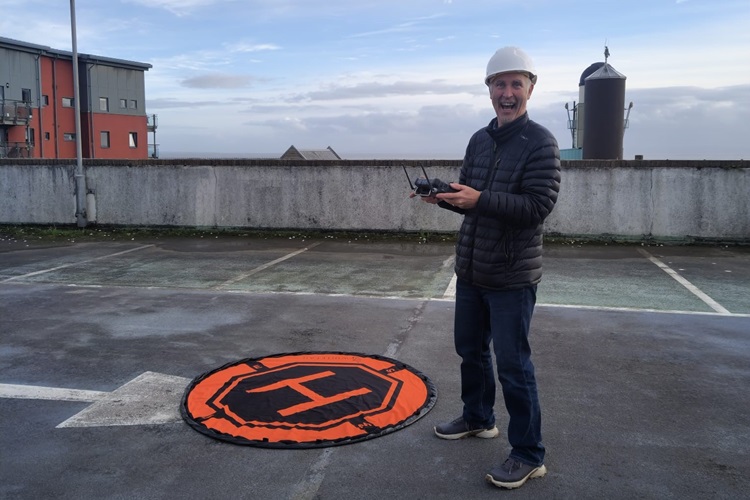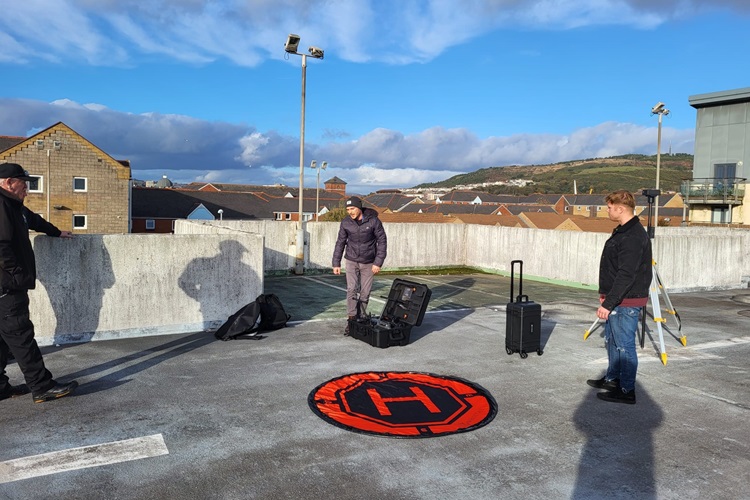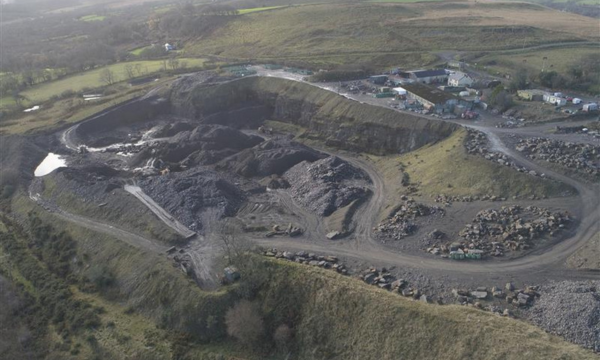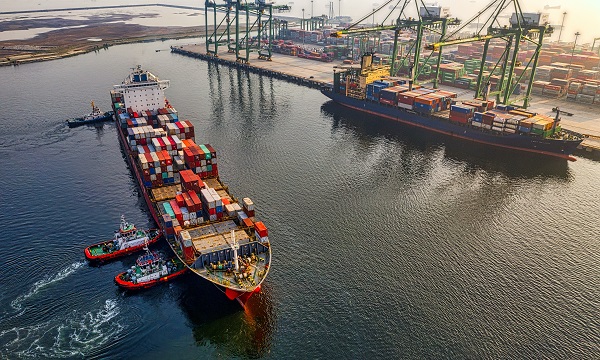Staff and students from the University of Wales Trinity Saint David (UWTSD) have been collaborating with one of the world’s most advance providers of specialist simulators and leading provider of integrated digital twin, data visualization and analysis tools Augment City in Oslo.
The aim is to support cities, nationally and internationally, on their net zero carbon journey.
Working in partnership with Welsh Government, the team from the University’s Architecture, Construction and Environment School used state-of-the-art equipment from UWTSD’s Construction Wales Innovation Centre (CWIC), to repeatedly scan Swansea city centre using a high-performance drone. This enabled the capture of 3D data in high resolution for use in the Digital Twin Model of Swansea.
The project, led by Ian Standen, Matthew Drummond, Brandon Roberts, and Drew Dennehy, involved multiple flights and processing to create a point cloud of the surveyed cityscape in 3D space resulting in a detailed digital model of Swansea, which was shown at COP28, which is taking place in Dubai this week.
The 3D mesh image generated, fed into the Digital Twin model compiled by Augment City in conjunction with key partners KPMG, OSC in preparation for COP28 in the UAE. The project is being facilitated by the Welsh Government’s Economy, Treasury and Constitution Group.

Ian Standen, Programme Director of Architecture at UWTSD said:
“This project gave us a great opportunity to demonstrate the skills and capacity of our university located in Swansea’s city centre. By using state-of-the-art technology, we were able to capture unique data to assess the challenges and opportunities of decarbonisation in a city context.
“The ability to evaluate the impact of roads and building infrastructure in terms of, for instance emission levels or energy consumption, in a holistic way, can facilitate a better understanding of their overall environmental impact.’
The digital twin model of Swansea was used during the ‘Empowering Cities with Digital Twins: Advancing Policies, Investments, and a Just Transition via a Whole Systems Approach’ session on December 6th.
During this session, the substantial impact of digital twins in the urban environment was explored by showcasing practical case studies in the form of digital twins from cities worldwide, including: Bodø & Stavanger, Norway; Swansea, UK; Surat & Kochi, India; Ithaca, US.

The purpose of the model or models going forward will be to create tools to support cities with their transition toward net zero.
The digital twin of Swansea demonstrates the capability as a joint programme between Augment City and KPMG, which is referred to as the Net Zero Urban Programme. The programme was launched last year at COP27.
Ian Standen said that post COP28, it was hoped further studies could be added to this work.
He added:
“This would provide a positive benefit to Swansea in the long term alongside key commercial partners offering wider services as part of the Net Zero Urban Programme, including business cases, blended finance models, implementation support, and net zero roadmaps. This would augment the ambitions for the city of Swansea and its regeneration plans.”
Dr Mark Cocks, Interim Dean of WISA said:
“My congratulations to the staff team on having their innovative work showcased at COP28. This exciting project illustrates how our collaborative practices and state-of-the-art digital technology can combine to extend our understanding of environmental challenges and build a better future.”
Professor Ian Walsh, Head of Research & Innovation at UWTSD said: “Achieving net zero is one of the great challenges of our age and requires an integrated global response. I’m delighted that the work of senior academics from UWTSD’s School of Architecture, Construction and Environment is contributing to this international effort and has been showcased at COP28.”











